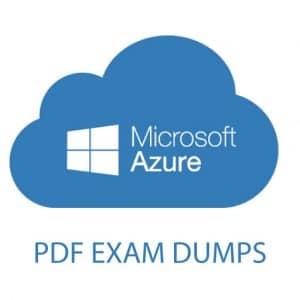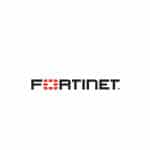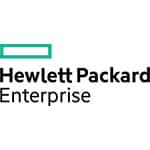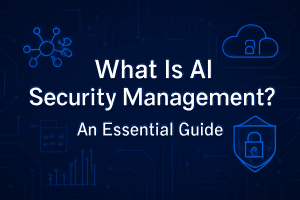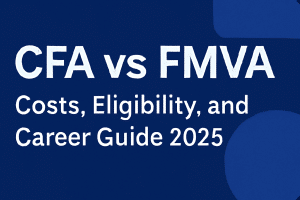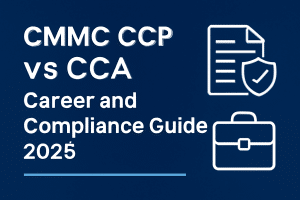Passing the AZ-500 exam might seem like a daunting task, but with the right approach and resources, it’s absolutely achievable. If you’re aiming to become a certified Azure Security Engineer, you’ve come to the right place. This guide is packed with practical tips, study strategies, and insights to help you navigate your preparation journey.
Whether you’re just getting started or fine-tuning your skills, this resource will keep you on track and focused.
Let’s explore how you can confidently ace the AZ-500 exam and advance your career in Azure security!
Exploring the Role of an Azure Security Engineer
At its core, the role of an Azure Security Engineer is about protecting systems, data, and applications hosted in Azure. Think of it as the guardian role for the cloud. It’s not just about fixing problems when they happen; it’s also about setting up systems to prevent them in the first place.
You’ll deal with everything from managing identity and access to protecting networks and securing sensitive data. Tasks can range from setting up multi-factor authentication (MFA) to monitoring for threats using Azure Security Center. If you enjoy diving into firewalls, encryption, and compliance requirements, this role has your name written all over it.
The demand for Azure Security Engineers has exploded as businesses migrate to the cloud. Organizations need people who can lock down their systems without slowing things down. This makes the AZ-500 exam incredibly relevant, it tests your ability to handle these real-world scenarios.
Career Growth Opportunities with AZ-500 Certification
Certifications like AZ-500 open doors big ones. Whether you’re already in IT or looking to switch gears, this cert gives you a competitive edge. With the cloud growing at breakneck speed, companies need security pros who can keep up.
Let’s talk money for a sec. Azure Security Engineers often land salaries that make the effort worthwhile. In the US, the average pay for roles tied to this cert can easily hit six figures. Add to that the flexibility to work remotely or with top-tier companies, and it’s clear why this cert is a career booster.
Plus, it’s not just about landing a high-paying job. The AZ-500 also gives you credibility. It signals to employers that you know what you’re doing with cloud security. Whether you’re working in tech support, system admin, or another cloud role, this cert proves you’ve got the chops to level up.
If you’re new to this path, our AZ-500 Certification Azure Security Engineer Guide gives you a complete overview of the exam, its objectives, and preparation strategies
Real-World Skills You’ll Master in the AZ-500 Exam
The AZ-500 is hands-on, it doesn’t waste your time with fluff. Here’s a sneak peek into what you’ll learn:
- Identity and Access Management: You’ll figure out how to set up secure sign-ins, manage identities, and implement MFA. Azure AD policies will be second nature by the time you’re done.
- Platform Protection: Ever wanted to configure Azure firewalls or set up virtual networks with security top of mind? This is where you’ll sharpen those skills.
- Data and App Security: You’ll learn to encrypt sensitive data and manage compliance requirements, which is critical in regulated industries.
- Security Operations: This includes setting up alerts, monitoring systems for threats, and using tools like Azure Sentinel to respond quickly.
What sets this cert apart is how applicable it is. The skills you’ll learn aren’t just for passing the exam; they’re what you’ll actually use in your job. From handling security for hybrid environments to fine-tuning role-based access control (RBAC), the AZ-500 prepares you for the day-to-day challenges of keeping Azure secure.
By the time you’ve passed, you’ll not only have the cert but also the confidence to take on real-world cloud security challenges. And that’s what really matters.

Demystifying the AZ-500 Exam Structure
The AZ-500 exam is designed to test your expertise in securing Microsoft Azure environments, and understanding its structure is key to crafting a solid preparation plan. Unlike other certifications, this one focuses on real-world scenarios, challenging you to think like a security engineer.
The exam consists of multiple sections or “domains,” each covering specific skills like identity management, data protection, and threat response. It’s a blend of theory and practice, where knowing the concepts isn’t enough, you’ll need to apply them. The test format includes various question types that require critical thinking, ensuring you’re ready for on-the-job challenges.
What Topics to Expect in the AZ-500 Exam
Here’s a breakdown of the major areas you’ll need to focus on:
- Identity and Access Management (30-35%)
This is one of the most significant sections, covering tasks like configuring Azure AD, implementing MFA, and managing user roles. Expect questions on privileged identity management and conditional access policies. - Platform Protection (15-20%)
This section dives into securing Azure virtual networks, firewalls, and NSGs (Network Security Groups). You’ll also work with Azure DDoS protection and container security. - Managing Security Operations (25-30%)
Here, you’ll tackle tasks like monitoring and responding to threats using Azure tools like Sentinel and Defender. It also involves automating security processes and configuring security alerts. - Securing Data and Applications (25-30%)
This part focuses on protecting sensitive data with encryption, managing Azure Key Vault, and configuring storage security. You’ll also learn to secure app services and implement security for serverless computing.

The Weightage of Domains and How It Impacts Your Prep
Not all topics are created equal in the AZ-500 exam. Domains like Identity and Access Management carry more weight, so it’s wise to dedicate extra time to these areas. Here’s a tip: map your study schedule to the domain weightage. Spend more hours on high-priority topics while ensuring you don’t neglect smaller sections.
For example, if a section accounts for 30% of the exam, aim to spend 30% of your total prep time mastering it. This strategy helps you prioritize effectively without getting overwhelmed.
Keep in mind that even low-weight sections can have tricky questions. Platform Protection, for instance, might seem smaller but covers technical details that can trip you up if you’re unprepared.
Understanding Question Types: Case Studies, Multiple-Choice, and More
The AZ-500 exam doesn’t just throw multiple-choice questions at you. Instead, it uses a mix of formats to assess your skills:
- Case Studies: These are scenario-based questions that test your ability to apply knowledge in real-world settings. You’ll analyze a situation, evaluate options, and recommend solutions. These are often the most time-consuming.
- Multiple-Choice Questions: Expect a mix of single-answer and multiple-answer questions. Some will ask you to select the best solution, while others might require choosing all correct answers.
- Drag-and-Drop Questions: You might need to sequence steps or match items. These test your process knowledge and understanding of configurations.
- Active Screen Questions: These let you interact with simulated Azure environments to configure settings or troubleshoot issues. Hands-on experience will help you nail these.
Knowing these formats can give you a confidence boost. Practice each type during your prep to reduce surprises on exam day. Mock tests and Microsoft’s practice labs are great ways to familiarize yourself with the structure.
Smart Strategies to Tackle AZ-500 Exam Prep Effectively
Preparing for the AZ-500 exam isn’t about cramming; it’s about strategic learning. With its focus on real-world Azure security skills, a thoughtful approach can make all the difference. Start by evaluating your current knowledge of Azure and security concepts, then craft a study plan tailored to your strengths and weaknesses. Mix learning methods like reading, hands-on labs, and practice exams to ensure a well-rounded prep.
The goal isn’t just to pass but to gain the confidence to handle Azure security tasks in the real world. Let’s dive into how you can prepare smarter, not harder.
Prioritizing Study Resources for Targeted Preparation
With so many resources available, it’s easy to get overwhelmed. Focus on high-quality materials that directly align with the AZ-500 exam objectives. Here are some must-have resources:
- Microsoft Learn: This free platform offers modules that cover each exam domain in detail. It’s interactive and beginner-friendly, making it a solid starting point.
- Paid Courses: Platforms like Udemy or Pluralsight offer in-depth video courses taught by experts. These often include labs and quizzes to reinforce learning.
- Official Practice Tests: Microsoft’s practice tests simulate the real exam experience. They’re excellent for identifying weak spots and building confidence.
- Azure Documentation: Dive into Microsoft’s official Azure docs for technical details on topics like Azure AD, Sentinel, and Key Vault.
- Community Forums and Blogs: Join Azure communities on platforms like Reddit or Microsoft Tech Community to learn from others’ experiences and tips.
Pick a few resources that match your learning style and stick to them. Jumping between too many materials can lead to burnout.
Aligning Your Study Plan with Microsoft’s Exam Guide
Microsoft’s official exam guide is your blueprint for success. It outlines every skill measured in the AZ-500 exam, broken down by domain. Here’s how to use it effectively:
- Break It Down: Divide the exam domains into manageable sections. Focus on one domain at a time to avoid feeling overwhelmed.
- Set Milestones: Create weekly goals to cover specific topics. For example, dedicate one week to Identity and Access Management and another to Platform Protection.
- Incorporate Labs: Practical skills are a big part of the exam. Use Azure Sandbox or tools like Whizlabs to get hands-on experience while studying each domain.
- Revisit the Guide: Periodically check the guide to ensure you haven’t missed any key topics.
A structured plan aligned with Microsoft’s guide keeps your prep focused and ensures you’re covering everything the exam requires.
For a detailed breakdown of how this certification impacts your earning potential, check out these job roles and salary insights for AZ-500 certified professionals.
How Much Time Should You Dedicate to Each Domain?
The time you spend on each domain should reflect its weight in the exam. Here’s a breakdown based on domain percentages and an estimated 6-week study plan:
Identity and Access Management (30-35%)
- Time to Dedicate: 2 weeks
- This domain is the heaviest, so give it extra attention. Focus on Azure AD, MFA, conditional access, and role-based access control.
Managing Security Operations (25-30%)
- Time to Dedicate: 1.5 weeks
- Learn to monitor and respond to threats using Azure tools like Sentinel and Defender. Automating security processes is also key.
Securing Data and Applications (25-30%)
- Time to Dedicate: 1.5 weeks
- Practice encrypting data, configuring Key Vault, and securing app services. Pay attention to compliance requirements.
Platform Protection (15-20%)
- Time to Dedicate: 1 week
- While this is a smaller domain, it covers technical topics like network security groups, firewalls, and DDoS protection.
Tips for Time Management:
- If you’re short on time, focus heavily on Identity and Access Management and Managing Security Operations, as they make up most of the exam.
- Use weekends for mock exams to gauge your progress and adjust your plan accordingly.
You’ll build the skills and confidence needed to ace the AZ-500 exam by allocating time wisely and sticking to a consistent schedule.
Top Study Resources for AZ-500 Exam Prep
Preparing for the AZ-500 exam isn’t just about studying harder, it’s about using the right resources. With so many tools available, knowing where to start can be confusing. The key is to choose materials that cover the exam’s objectives and help you develop practical skills. Let’s explore the best study resources to keep your prep on point.
Microsoft Learn: Free but Powerful Resource
Microsoft Learn is a go-to platform for anyone diving into Azure certifications. It’s free, structured, and tailored to match Microsoft’s exam objectives. The AZ-500 learning paths are designed to break down complex topics into easy-to-digest modules, covering areas like:
- Identity and access management
- Platform protection
- Securing data and applications
- Monitoring and security operations
One of the best parts about Microsoft Learn is its interactive content. Many modules come with hands-on labs, letting you practice in real Azure environments. This practical approach not only helps solidify your understanding but also builds confidence for scenario-based exam questions.
Pro Tip: Pair Microsoft Learn with practice tests to apply what you’re learning and identify gaps early on.
The Value of Paid AZ-500 Practice Tests and Courses
Investing in paid resources can be a game-changer for your prep. While free resources are great, paid options often go deeper, offering detailed explanations, expert insights, and structured learning paths.
Popular Paid Platforms for AZ-500 Courses:
- Udemy: Affordable courses with lifetime access, covering all exam domains with video lectures, quizzes, and hands-on labs.
- Pluralsight: A subscription-based platform offering in-depth AZ-500 courses taught by industry pros, with practice assessments and skill paths.
- Whizlabs: Known for its high-quality practice tests and video lessons, perfect for testing your readiness.
Why Practice Tests Are Crucial:
Practice tests simulate the real exam, giving you a feel for the types of questions and how they’re structured. High-quality practice tests highlight weak areas, helping you focus your study efforts. Platforms like MeasureUp and Whizlabs offer some of the best AZ-500 practice tests out there.
Best Books and Publications for AZ-500 Mastery
If you prefer a more traditional approach, books can be a great addition to your study routine. Here are some highly recommended options:
- “Exam Ref AZ-500 Microsoft Azure Security Technologies” by Yuri Diogenes and Dr. Thomas W. Shinder
- This official Microsoft guide dives deep into the exam objectives, with real-world examples and tips for tackling the test.
- “Azure Security Handbook for Beginners” by Mustafa Toroman
- While not specific to the AZ-500, it covers essential Azure security concepts in a beginner-friendly way.
- “Microsoft Azure Security Technologies Certification and Beyond” by David Okeyode
- A comprehensive guide that goes beyond the basics, with practical labs and detailed explanations.
Books provide a structured way to study and are perfect for revisiting complex topics or preparing offline.
If you’re unsure whether to start with fundamentals or jump straight into security, this AZ-500 vs AZ-900 certification comparison highlights the key differences to help you choose.
Exam Dumps by Cert Empire
If you’re looking for reliable and up-to-date exam dumps, Cert Empire is a trusted option. Their AZ-500 dumps are curated to reflect the latest exam format, helping you familiarize yourself with the types of questions you’ll face. Here’s why their dumps stand out:
- Accuracy: Questions are verified to match the real exam, giving you an edge in preparation.
- Detailed Explanations: Each question comes with answers and explanations, so you’re not just memorizing, you’re learning.
- Regular Updates: Dumps are updated frequently to ensure they align with any changes in the exam syllabus.
Using dumps wisely as a supplementary tool can help reinforce your knowledge and improve your confidence before exam day. However, they shouldn’t be your sole resource. Combine them with hands-on practice and study materials for the best results.
Skills to Focus On for Azure Security Engineer Success
Becoming an Azure Security Engineer isn’t just about passing the AZ-500 exam, it’s about mastering the skills needed to secure complex cloud environments. The role requires a mix of technical know-how, problem-solving ability, and a solid understanding of Azure’s security tools. Let’s break down the core skills you should focus on for both the exam and your career.
Strengthening Identity and Access Management Knowledge
Identity is the cornerstone of cloud security, and Azure Security Engineers are expected to be experts in managing it. Here are the key areas to focus on:
- Azure Active Directory (Azure AD): Learn how to configure Azure AD to manage user identities and access control. This includes creating users and groups, configuring roles, and integrating Azure AD with third-party applications.
- Multi-Factor Authentication (MFA): Setting up and enforcing MFA policies is critical for securing access to Azure resources. Practice configuring conditional access policies to strengthen identity protection.
- Privileged Identity Management (PIM): Dive into PIM to manage and monitor elevated access to resources. Understanding just-in-time (JIT) access and how to minimize exposure to privileged accounts is crucial.
- Authentication Protocols: Brush up on protocols like OAuth 2.0, OpenID Connect, and SAML, which are the backbone of secure authentication in Azure.
Real-world tip: Set up a test Azure environment and experiment with these configurations. Hands-on experience will not only help with the exam but also prepare you for daily tasks in this role.
Mastering Data Protection Mechanisms in Azure
Data security is a top priority in any cloud environment. Azure offers several tools and practices to protect data at rest, in transit, and during processing. Key skills to focus on include:
- Encryption: Learn to configure encryption for Azure storage, databases, and virtual machines. This includes Azure Disk Encryption and server-side encryption for Azure Blob Storage.
- Azure Key Vault: Master the use of Key Vault to securely store and manage encryption keys, secrets, and certificates. Practice creating key vaults, setting access policies, and using managed identities for secure access.
- Data Masking and Tokenization: Understand how to implement dynamic data masking to protect sensitive information in Azure SQL Database.
- Azure Information Protection (AIP): Explore AIP for classifying, labeling, and protecting data, both within and outside the organization.
Tip: Security scenarios involving encryption and key management are common in the AZ-500 exam, so be sure to practice these in real-world contexts.
Core Security Operations Tasks You Need to Practice
Security operations are where theory meets practice. Azure Security Engineers play a key role in detecting, investigating, and responding to security incidents. Here’s what you need to focus on:
- Azure Security Center: Get comfortable using Security Center to monitor and manage your security posture. Learn how to interpret security recommendations and implement them effectively.
- Azure Sentinel: This powerful tool for security information and event management (SIEM) is a must-know. Practice creating workbooks, setting up alerts, and responding to incidents using playbooks.
- Log Analytics and Monitoring: Learn to collect and analyze logs from Azure Monitor, Security Center, and other sources. This skill is vital for identifying and mitigating threats.
- Threat Modeling: Familiarize yourself with tools like Microsoft Threat Modeling Tool to identify vulnerabilities and plan mitigations.
A practical tip here is to simulate real-world scenarios. For example, configure an Azure Sentinel workspace, ingest data from multiple sources, and create rules to detect suspicious activities.
Tips for Exam Day Success
Exam day can feel intense, but with the right mindset and preparation, you’ll be ready to tackle the AZ-500 with confidence. Success isn’t just about what you know, it’s about how well you manage your time, handle stress, and approach each question strategically. Let’s explore how you can stay sharp and focused throughout the test.
Time Management Tricks for the AZ-500 Exam
The AZ-500 exam is timed, so managing every minute is critical. Here are some strategies to keep your pace steady:
- Start with the Questions You Know: Don’t get stuck on tough questions at the beginning. Answer the ones you’re confident about first, then circle back to harder ones later.
- Divide Your Time by Section: The exam is split into domains, and each domain’s weightage can help you estimate how much time to spend. For example, allocate more time to Identity and Access Management, as it carries the most weight.
- Keep an Eye on the Clock: Check the time periodically, but don’t obsess over it. Aim to finish with at least 15 minutes left for review.
- Practice Time Management in Mock Exams: Simulate exam conditions while practicing to build your speed and comfort with the format.
How to Tackle Stress and Stay Focused During the Test
Staying calm and focused is just as important as knowing the material. Here’s how to keep nerves in check:
- Take Deep Breaths: If you feel overwhelmed, pause for a moment and take a few deep breaths to reset. It helps clear your mind and reduce anxiety.
- Focus on One Question at a Time: Don’t let unanswered questions linger in your mind. Tackle each question as it comes and move on.
- Use the Flag Option Wisely: If you’re unsure about a question, flag it for review instead of spending too much time. This prevents you from running out of time on easier questions.
- Stay Hydrated and Eat Well: A light meal and plenty of water before the test can help maintain your energy and focus.
Remember, stress is normal, but preparation is your best defense against it. The more you’ve practiced, the more confident you’ll feel.
Reviewing Your Answers Without Overthinking
Once you’ve answered all the questions, it’s tempting to go back and second-guess yourself. Here’s how to review effectively without falling into the overthinking trap:
- Prioritize Flagged Questions: Start by revisiting the ones you flagged. Focus on questions where you genuinely needed more time or information.
- Trust Your Gut: Often, your first instinct is correct. Avoid changing answers unless you’re certain you made a mistake.
- Check for Obvious Errors: Look for simple mistakes like misreading the question or skipping over key details.
- Leave Time for Final Review: Allocate the last 5–10 minutes to quickly skim through all your answers for peace of mind.
Final Thoughts
Walking into the AZ-500 exam prepared and composed is half the battle. Time management, staying calm under pressure, and reviewing wisely are skills that can turn a good performance into a great one. Combine these tips with solid preparation, and you’ll be set for success!
FAQs to Help You Nail the AZ-500 Exam
What Is the Passing Score for the AZ-500 Exam?
The passing score is 700 out of 1000. Focus on weighted domains to ensure a solid performance.
Can Beginners Attempt the AZ-500 Without Prior Azure Experience?
While possible, it’s challenging. Beginners should first build foundational Azure knowledge through Microsoft Learn or an Azure Fundamentals certification.
How Often Does Microsoft Update the AZ-500 Exam Content?
Microsoft updates the exam periodically to reflect changes in Azure services. Check the official exam page for the latest updates.
Are Practice Dumps a Reliable Way to Prepare for the AZ-500?
Practice dumps can be helpful for revision, but they should complement not replace hands-on labs and official study materials.
What Is the Best Way to Stay Updated on Azure Security Trends?
Follow Microsoft’s Azure blog, join Azure security forums, and engage with the tech community for the latest insights and updates.





